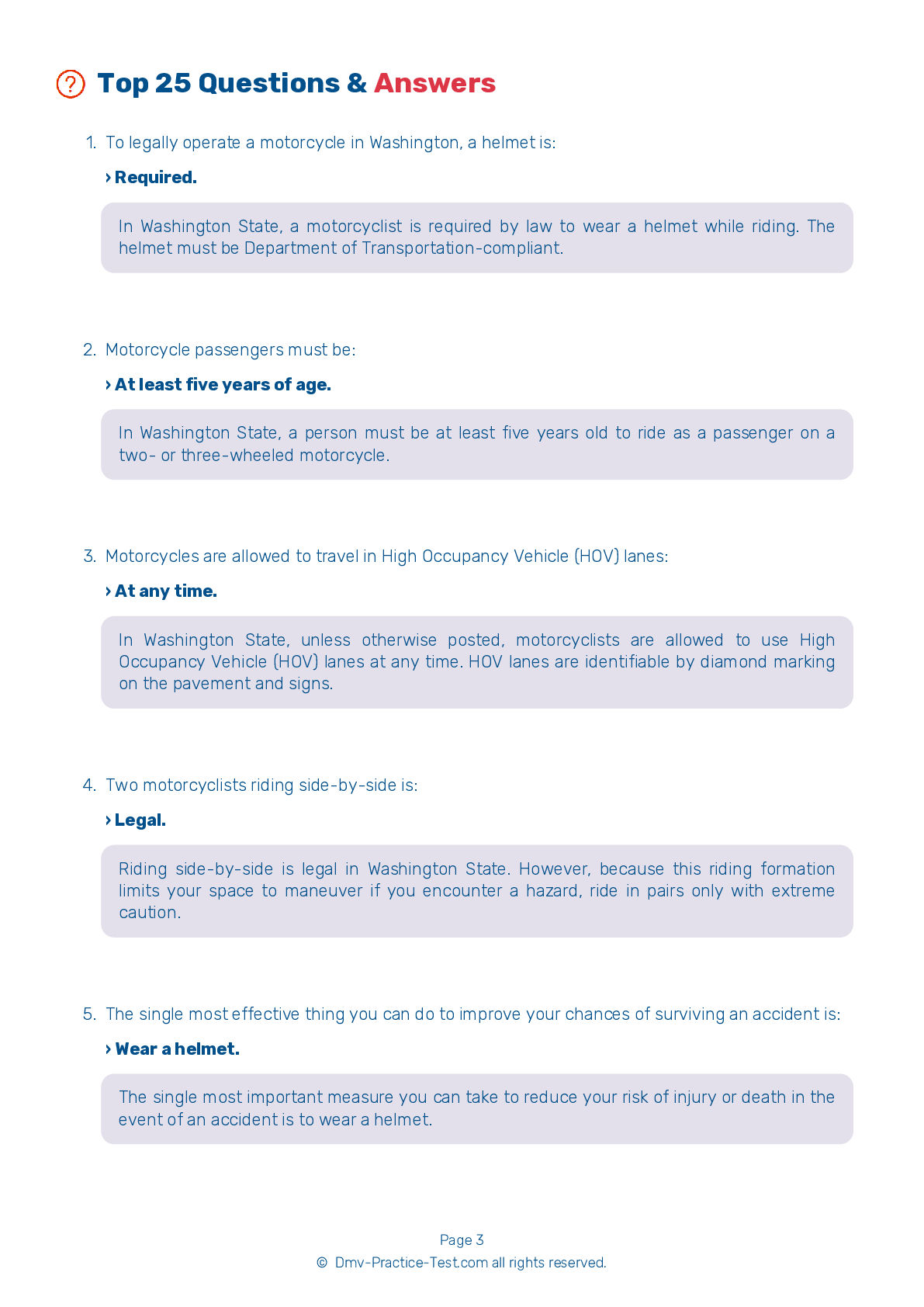Motorcycle Test | License WA 2025 | FREE Online Practice! #13 Page 2 of 5
Take this FREE motorcycle test (license in WA 2025) to check your knowledge of the road rules. To improve your results, download a motorcycle handbook online, study theory, and practice for free on our website. Still worried about how to get a motorcycle license in Washington in 2025? Check our website for more sample tests, train as much as possible, and boost your grades!
6 . All of the following will lessen your chances of being involved in an accident, except:
To reduce your risk of being involved in a crash, you should remain alert and ready to react to any hazard. Identify hazards and decide the order in which you need to address the hazards. Always use your headlight to make yourself more visible and maintain an adequate space cushion around your motorcycle at all times.
7 . What could happen if a motorcyclist takes a turn too fast?
Riders often try to take curves or turns too fast. When they can’t hold the turn, they end up crossing into another lane of traffic or going off the road. Riders also often overreact and brake too hard, causing a skid and loss of control.
8 . Scan the road ______ ahead of your motorcycle.
Search your path of travel at least 12 seconds ahead of your motorcycle. This will allow you to see and react to hazards before meeting them.
9 . A good way to handle tailgaters is to:
The best way to handle a tailgater is to change lanes and let them pass you. Speeding up may cause them to tailgate you at a higher speed, only increasing the danger.
10 . This sign means:

Warning signs are usually diamond-shaped with black markings on a yellow background. They alert drivers to upcoming hazards. This sign indicates that the divided highway is about to end.
See the exact questions that will be on the 2025 Washington DMV exam.
99.2% of people who use the cheat sheet pass the FIRST TIME
Jeneen was tired of paying $5/gallon. She got herself a scooter that required the motorcycle license. She studyed the motorcycle test cheat sheet and passed her test the next day!
Christopher tells us how he knew nothing prior to obtaining the motorcycle study guide, and he only got one question wrong because he clicked on the wrong answer by mistake.



